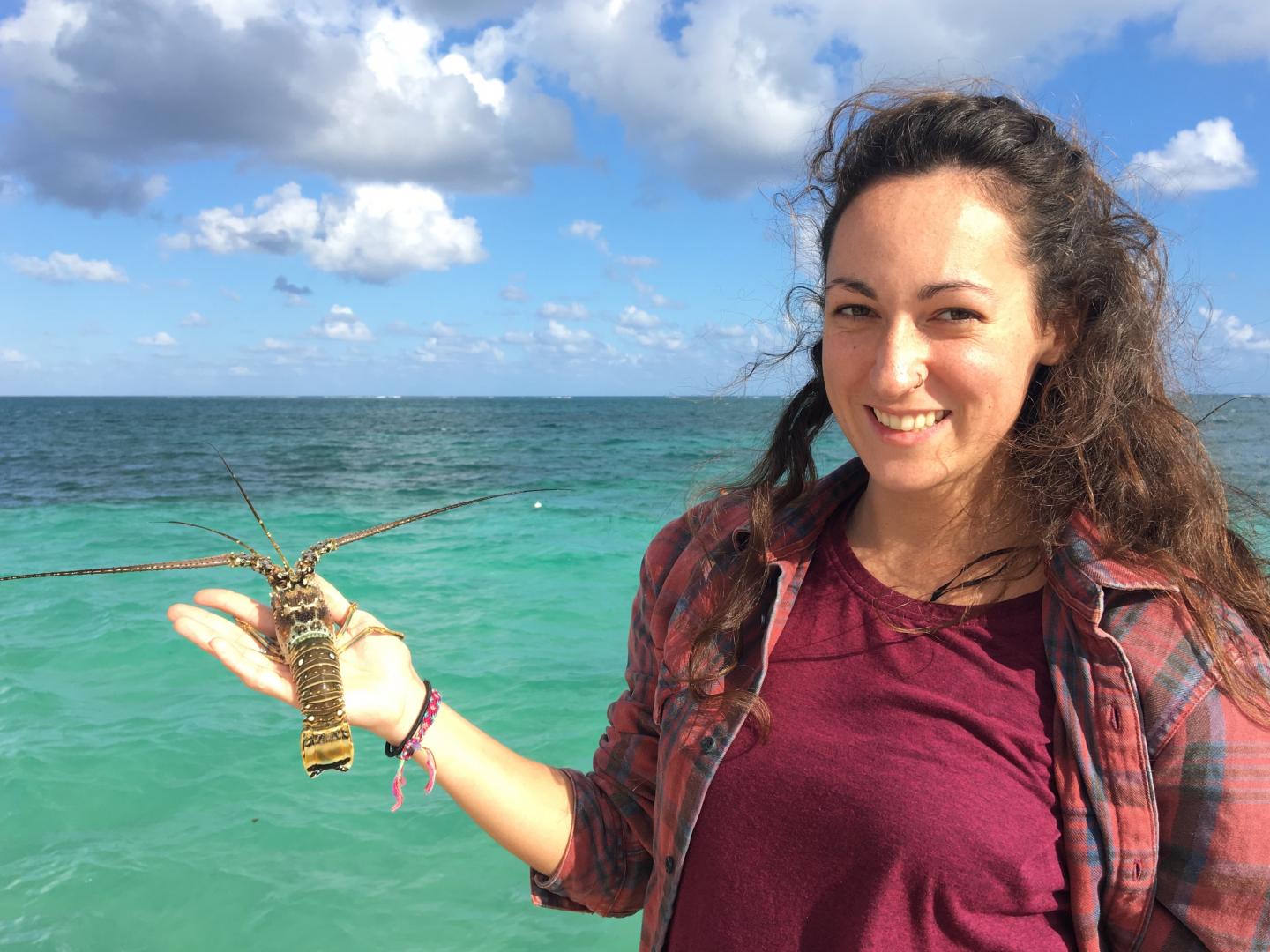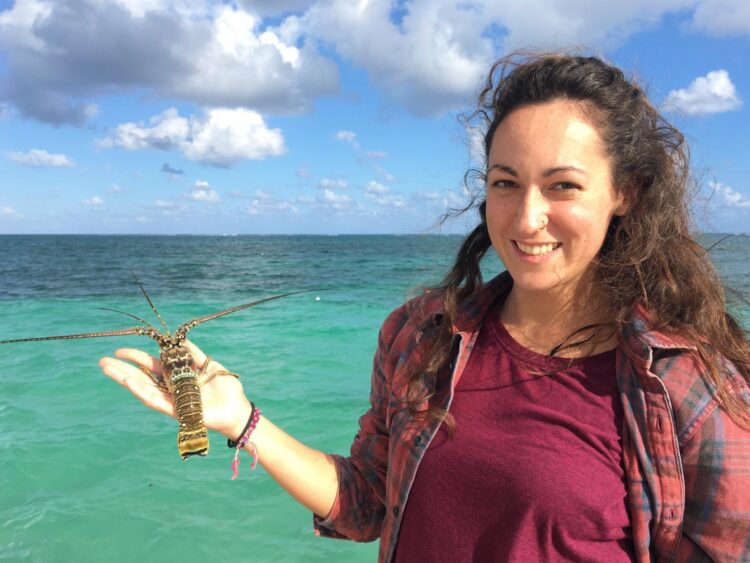Study of Caribbean lobsters sheds light on disease and fragile ecosystems

Credit: Charlotte Eve Davies/Swansea University
Virus prevalence associated with habitat: study of Caribbean lobsters sheds light on disease and fragile ecosystems.
Levels of virus infection in lobsters seem to be related to habitat and other species, new studies of Caribbean marine protected areas have shown.
The findings will support efforts to safeguard Caribbean spiny lobsters, which are a vital food source for communities across the region and world.
They also boost our understanding of how viruses spread – disease dynamics – and of the ecology of fragile environments such as tropical reef lagoons and seagrass ecosystems.
The spiny lobster, which has the scientific name Panulirus argus, is found across the Caribbean. Coastal habitats such as seagrass meadows and beds of algae act as nurseries for the juveniles before they move to the coral reefs when they are fully grown.
The research, led by Dr Charlotte Davies, now of Swansea University, took place with colleagues at the National Autonomous University of Mexico’s Reef Systems Unit.
They focused on a threat to this species called Panulirus argus virus 1 (PaV1). Discovered in 2000, PaV1 is the first known naturally occurring virus in lobsters.
The virus is a particular threat to juvenile lobsters, so tackling it is vital in protecting the species.
The team examined lobsters in two marine protected areas in the Mexican Caribbean: the Sian Ka’an Biosphere Reserve and the National Reef Park of Puerto Morelos, where the virus has been present since 2001.
They carried out the systematic assessment of virus prevalence across both sites, once a year for two years in Sian Ka’an and seasonally over 4 years in Puerto Morelos. Each site was separated into zones with differing features such as water depth, sediment and extent of vegetation.
Previous research had suggested that virus prevalence may have a correlation with habitat, so investigating this in more detail was at the heart of the research, as well as looking at biodiversity of surrounding invertebrate (lobster food) communities.
The team found:
- The rate of infection overall was highest amongst smaller juvenile lobsters, confirming findings from previous studies, and true prevalence could be as high as 32% across populations.
- In Sian Ka’an, they found that significantly more lobsters with PaV1 lived in the highly vegetated seagrass meadows, compared to the coral reefs – indicating that there may be something in the seagrass which is preventing the virus spreading. Recent research elsewhere has shown that coastal seagrass meadows can trap some pathogens, greatly reducing the number that reach the open ocean and benefiting humans and marine life.
- However, in Puerto Morelos, where the lobsters are smaller and the ecosystem is very different, variations in habitat in the lagoon did not significantly influence the prevalence of the virus, showing that results may be site-specific.
Dr Charlotte Eve Davies of Swansea University, lead researcher on the project, said:
“What influences the spread of a virus? Our question was whether habitat or food species play a role, in relation to Caribbean spiny lobsters.
Our studies showed that the overall habitat – physical surroundings and other species – can significantly influence the prevalence of this virus depending on the location and ecosystem.
Our findings can help safeguard this important food resource for Caribbean communities. They also increase our understanding of this virus and give us a better picture of the wider ecosystem in this fragile environment.”
###
Notes to editors:
The Puerto Morelos study is published in Plos One.
Swansea University is a world-class, research-led, dual campus university offering a first-class student experience and has one of the best employability rates of graduates in the UK. The University has the highest possible rating for teaching – the Gold rating in the Teaching Excellence Framework (TEF) in 2018 and was commended for its high proportions of students achieving consistently outstanding outcomes.
Swansea climbed 14 places to 31st in the Guardian University Guide 2019, making us Wales’ top ranked university, with one of the best success rates of graduates gaining employment in the UK and the same overall satisfaction level as the Number 1 ranked university.
The 2014 Research Excellence Framework (REF) 2014 results saw Swansea make the ‘biggest leap among research-intensive institutions’ in the UK (Times Higher Education, December 2014) and achieved its ambition to be a top 30 research University, soaring up the league table to 26th in the UK.
The University is in the top 300 best universities in the world, ranked in the 251-300 group in The Times Higher Education World University rankings 2018. Swansea University now has 23 main partners, awarding joint degrees and post-graduate qualifications.
The University was established in 1920 and was the first campus university in the UK. It currently offers around 350 undergraduate courses and 350 postgraduate courses to circa 20,000 undergraduate and postgraduate students. The University has ambitious expansion plans as it moves towards its centenary in 2020 and aims to continue to extend its global reach and realise its domestic and international potential.
Swansea University is a registered charity. No.1138342. Visit http://www.
For more information:
Kevin Sullivan, Swansea University Public Relations Office [email protected]
Follow us on Twitter: http://www.
Find us on Facebook: http://www.
Media Contact
Kevin Sullivan
[email protected]
Related Journal Article
http://dx.





